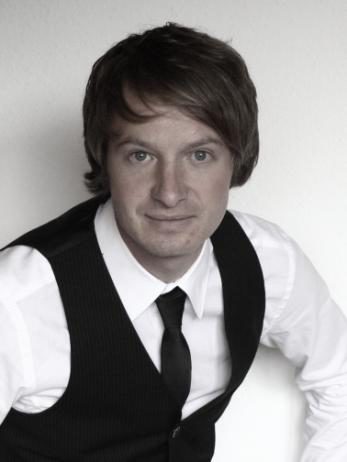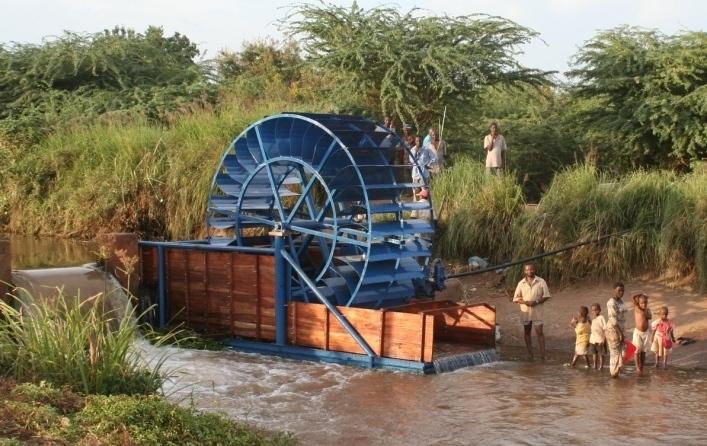
Dipl.-Ing. Dominik Tröster
Datum des Kolloquiums: 27.August 2010
In Kooperation mit: Consulting Engineers Salzgitter GmbH (CES)
This thesis concerns with the design and installation of a waterwheel to produce energy in a developing country by the example of a rural water supply scheme in Tanzania.
In the framework of the Moshi Rural Water Supply Project (MRWSP) in Tanzania the settlement of Kahe shall be supplied with drinking water: From a deep well, water should be pumped by two piston pumps to various raiser tanks from which it gets distributed to the population.
The piston pumps shall be powered by a waterwheel to lift 350 m³/d over a total height of 20 m (including friction losses).
The tasks to be covered comprise the following:
- Planning including identification of the site
- Assessment of workmanship and available materials on the local market
- Waterwheel design adapted to the local conditions
- Waterwheel manufacturing and set-up on the site
- Putting into operation and commissioning
The main reason to ensure the supply by a waterwheel is the need of an energy source which provides energy 24 hours a day.
Smaller schemes can efficiently be run by solar power which faces the disadvantage of limited operation times (approximately ten hours of daylight time). Because of this dimensions they have to be enlarged what in turn increases the costs in bigger schemes significantly.
To ensure feasibility of the task besides a topographical survey also investigations on local material and workshops as well as work technique available had to be done.
After selection of a location, a first estimation of productivity had to prove feasibility and together with the results of the material/workshop survey, actual design works could be started with.
The design of the wheel - concerning its dimensions - bases on formulas derived empirically in the 19th century. In turn, the shape of the blades is designed following Banki's design of a cross-flow turbine.
The breastshot design of the wheel deviates from the design of common wheels. The wheel system is split into four modules: the wheel itself, the main frame, the inflow structure and the outflow channel. All parts are mounted onto the main frame and can easily be removed thus allowing for maintenance, replacement or even relocation.
Transmission to the pumps is done via V-belts. Applied materials are standard profiles and commonly available in the region.
Manufacturing required intense guidance and close supervision as well as a good share of improvisation due to changing availability of materials and often limited manufacturing tools and skills.
Putting into operation and commissioning involved first pumping tests which were completed successfully, pressure and water flow brought the desired result. Figure 1 represents the operating wheel.



